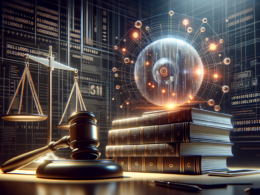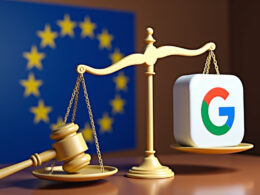Unveiling the Future of AI
In the latest advancement in AI technology, OpenAI has launched GPT-5, positioned as a significant leap forward in chatbot capabilities. Building on its predecessor, GPT-4, the corporation touted improvements in efficiency and accuracy for GPT-5. However, the launch has been mired in controversy due to misleading performance charts featured in its promotional materials.
Zooming In
The Bizarre Chart Mishap
During the GPT-5 unveiling, the performance charts presented ostensibly aimed to highlight the model’s advancements over previous iterations including OpenAI’s own GPT-4 and GPT-3 versions. However, these charts became a point of contention as they displayed troubling inconsistencies and inaccuracies that raised doubts about their credibility.
For instance, an accuracy chart comparing the Sweet-bench (SWE-bench) performance of various models inaccurately portrayed GPT-5 as being significantly superior, showcasing it as having an accuracy of 74.9%. Meanwhile, GPT-3 was shown with a suspiciously minimized representation, despite its fairly competitive 69.1% accuracy score. Such disproportionate bar representations led viewers to wonder if GPT-5 itself had a hand in generating these charts.
Industry Reactions
The AI community and industry stakeholders were quick to respond, drawing attention to the potential over-exaggeration of GPT-5’s capabilities. Concerns were voiced by notable figures, including Elon Musk, who questioned the integrity of excluding certain tasks to potentially inflate GPT-5’s overall performance scores. These developments underscore the demand for transparency and accuracy in AI advancement reporting.
Implications for the AI Sector
This incident underscores a broader issue within the AI industry, where the race to showcase cutting-edge technology sometimes comes at the expense of transparency and reliability. It also highlights the importance of ensuring that AI advancements are communicated with honesty and clarity to avoid misleading stakeholders and the public. The situation serves as a reminder of the ethical responsibilities that companies hold, particularly since AI technologies increasingly influence socio-economic structures and decision-making processes globally.
Future of OpenAI and AI Technologies
Despite the current predicament, OpenAI remains a key player in the AI field, continually pushing the envelope of what’s possible with machine learning. Moving forward, the company faces the challenge of restoring stakeholder confidence through consistent, accurate communication and clarity about its AI models’ real-world performance.
OpenAI has since amended these charts on its official website, indicating that the initial errors were not deliberate. However, this serves as a timely reminder of the crucial role of accountability and scrutiny in the technological landscape.
As the AI ecosystem continues to evolve rapidly, maintaining a balance between innovation and ethical practice will be vital for industry leaders and newcomers alike. The learnings from GPT-5’s launch would, hopefully, usher in more rigorous standards for presenting technological advancements in the AI domain.









